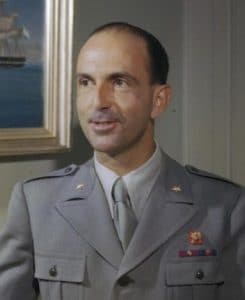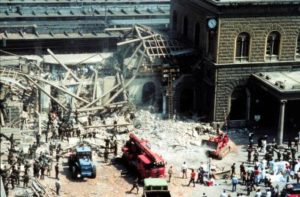
Fears of a possible Communist takeover (especially in the United States) proved crucial for the first universal suffrage electoral outcome on 18 April 1948, when the Christian Democrats, under the leadership of Alcide De Gasperi, obtained a landslide victory. Consequently, in 1949 Italy became a member of NATO. The Marshall Plan helped to revive the Italian economy which, until the late 1960s, enjoyed a period of sustained economic growth commonly called the “Economic Miracle“. In 1957, Italy was a founding member of the European Economic Community (EEC), which became the European Union (EU) in 1993.
From the late 1960s until the early 1980s, the country experienced the Years of Lead, a period characterized by economic crisis (especially after the 1973 oil crisis), widespread social conflicts and terrorist massacres carried out by opposing extremist groups, with the alleged involvement of US and Soviet intelligence. The Years of Lead culminated in the assassination of the Christian Democrat leader Aldo Moro in 1978 and the Bologna railway station massacre in 1980, where 85 people died.

In the 1980s, for the first time since 1945, two governments were led by non-Christian-Democrat premiers: one republican (Giovanni Spadolini) and one socialist (Bettino Craxi); the Christian Democrats remained, however, the main government party. During Craxi’s government, the economy recovered and Italy became the world’s fifth largest industrial nation, after it gained the entry into the Group of Seven in the 1970s. However, as a result of his spending policies, the Italian national debt skyrocketed during the Craxi era, soon passing 100% of the country’s GDP.
Italy faced several terror attacks between 1992–93 perpetrated by the Sicilian Mafia as a consequence of several life sentences pronounced during the “Maxi Trial“, and of the new anti-mafia measures launched by the government. In 1992, two major dynamite attacks killed the judges Giovanni Falcone (23 May in the Capaci bombing) and Paolo Borsellino (19 July in the Via D’Amelio bombing). One year later (May–July 1993), tourist spots were attacked, such as the Via dei Georgofili in Florence, Via Palestro in Milan, and the Piazza San Giovanni in Laterano and Via San Teodoro in Rome, leaving 10 dead and 93 injured and causing severe damage to cultural heritage such as the Uffizi Gallery. The Catholic Church openly condemned the Mafia, and two churches were bombed and an anti-Mafia priest shot dead in Rome. Also in the early 1990s, Italy faced significant challenges, as voters – disenchanted with political paralysis, massive public debt and the extensive corruption system (known as Tangentopoli) uncovered by the Clean Hands (Mani Pulite) investigation – demanded radical reforms. The scandals involved all major parties, but especially those in the government coalition: the Christian Democrats, who ruled for almost 50 years, underwent a severe crisis and eventually disbanded, splitting up into several factions. The Communists reorganized as a social-democratic force. During the 1990s and the 2000s, centre-right (dominated by media magnate Silvio Berlusconi) and center-left coalitions (led by university professor Romano Prodi) alternately governed the country.
